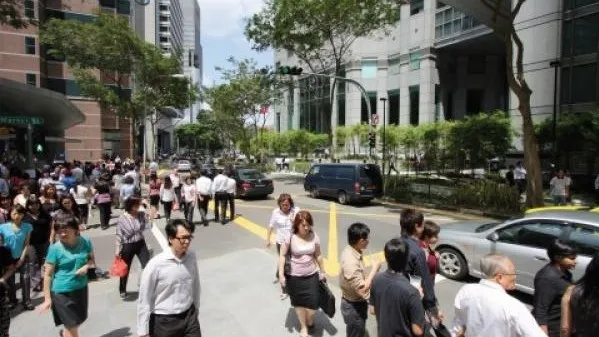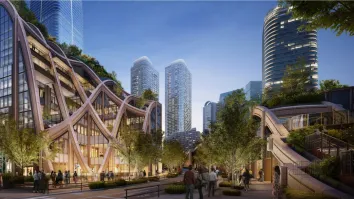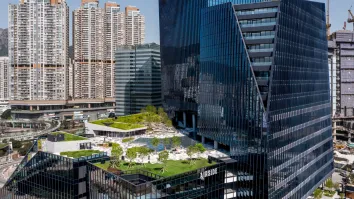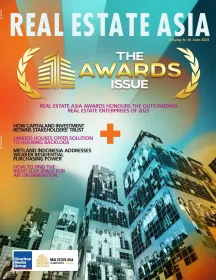
4 trends to watch in Singapore’s office property market
There may be a ‘severe shortage’ of office space in 3 to 5 years’ time.
The reversal to working-from-home (WFH) in April 2021 and the subsequent one-step forward and then one-step back policies delayed the recovery of the sector, according to a Savills report. The emergence of the Omicron strain towards the end of the year further upset the market’s new dynamics from manifesting.
“With global policies towards combatting COVID in desynchronized states, the tenant base was akin to a pot of stew continually stirred and not allowed to settle. However, with governments in developed countries determined to put the past two years to rest, 2022 could be the year when the market resets itself for growth,” the analyst said.
Some trends can already be discerned, and Savills lists some of them below:
Trend #1
The frontiers of technology will continue to expand at an accelerated pace. According to Crunchbase, venture funding in 2021 broke records across the board. Their data showed that investment last year was up more than 10x what it was a decade earlier. Global venture investment last year totalled US$643 billion, compared to US$335 billion for 2020, a 92 percent growth YoY.
The flood of money into these companies should trickle down to office (and industrial/business park) space demand when both listed tech companies and unlisted unicorns who obtained copious funding seek to expand beyond their shores. Singapore, being an attractive hub in the South-East Asian region, is a natural place for these companies to set up offices.
Trend #2
The adoption of ESG practices will create a sea of consultancy companies in this space. As concerns about COVID fade, climate change takes centre stage. Singapore’s hub status is where many of these consultancies can develop business in the Southeast Asian region. The rapid take up of office and business park space by tech companies is already well-documented. But the new kid on the block which could drive office demand this decade and perhaps the next could be carbon audit companies.
CDP is the largest repository of information on how carbon pricing is viewed and used by companies. And the market is huge. A survey by CDP showed that since 2018, there has been a 43% increase with 853 companies now disclosing that they currently use an internal price on carbon. For companies that intend to adopt an internal carbon pricing mechanism, the growth over the same period was 63%.
The most notable growth comes from Asia which has continued its rapid growth as previously demonstrated in CDP’s report from 2017. The region ranked first among all regions with 796 companies using or planning an internal price on carbon in 2020. In China, the total number of companies using or planning an internal price on carbon increased by over 27% since 2019. More carbon related consultancy entities are expected to set up practices in the region and Singapore should be a recipient of some of them.
Trend #3
There is a relative lack of new supply from now until 2026. AXA Tower (672,000 sq ft) has been taken off the market for redevelopment and new completions from 2022 to 2026 are quite spaced out. The next major office completions expected are for Guoco Midtown (October/November 2022 - 553,000 sq ft NLA), Central Boulevard (Q4/2023 – 1.26 million sq ft NLA), Shaw Tower redevelopment (Q4/2024 – 450,000 sq ft NLA), Keppel Towers redevelopment (2025/26 - 492,000 sq ft NLA) and Fuji Xerox Tower redevelopment (Q4/2025 – 201,000 sq ft NLA).
In total, average Grade A supply over the next 5 years is only about 660,000 sq ft NLA. This is only slightly more than half the average annual take-up for the decade prior to the outbreak of Sars-CoV-2. Given the dynamic nature of corporate behaviour, we also need to consider the real possibility that older CBD Grade A buildings may over the next couple of years be taken down completely for redevelopment.
Trend #4
The longer the pandemic lasts, more tenants will see their leases expire and given heightened levels of uncertainty, many may choose to right-size for a lease cycle to watch how things unfold. However, come the next lease renewal, there is a significant chance that many who wish to bulk up again cannot do so as they had given up desks so much that all the workers cannot return to the office. The low rate of new supply coupled with office buildings being taken off the market and secondary space being slowly absorbed by tech companies may, in 3 to 5 years’ time, create a severe shortage of space.
This last point is perhaps of great significance because there is a real and present danger that we may see very sharp rental increases in a few years’ time when the slack left from companies right sizing slowly gets taken up and then only to realise that new supply is not coming through when companies wish to re-expand again.
Coupled with the rapidly expanding ESG and tech sectors, we could easily see annual double digit office rental increases as we head towards the middle of this decade. For now, these present themselves as tail risks because of global political uncertainties and the question of how to reduce the carbon footprint of office space users remains unclear.


















 Advertise
Advertise


